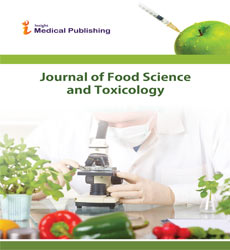Effect of Pre-Treatments and Drying Methods on Physical and Microstructural Properties of Potato Flour
Abstract
This study evaluated the effects of pre-treatments (blanching (60°C and 95°) and boiling) and
drying methods (freeze-drying and oven drying) on quality characteristics of potato flour
derived from three potato varieties, namely Shangi, Unica, and Dutch robjin. The percentage
flour yield, color, particle size distribution, flow characteristic, microstructural and functional
properties of the potato flour were determined. Unica recorded the least peeling loss, while
Dutch robjn variety had the highest. The color parameters were significantly (p<0.05)
affected by the pre-treatments and drying methods. Freeze drying produced lighter potato
flour (L*=92.86) compared to the other methods. Boiling and blanching at 95°C followed by
oven drying recorded a low angle of repose and compressibility index indicating better flow
characteristics. The smallest particle size (56.5μm) was recorded for Freeze-drying treatment
while boiling followed by oven drying had the largest particle size (307.5μm). Microstructural
results indicate that boiling and blanching at 95°C followed by oven drying resulted in
damaged starch granules while freeze-drying and low-temperature blanching (60ºC)
maintained the native starch granule. Particle size and the solubility index of potato flour
showed a strong positive correlation. This study revealed that the pre-treatments and drying
methods affected potato flour's physical and microstructural parameters differently,
resulting in changes in their functionality
2022
Vol 6. No. S 2
Open Access Journals
- Aquaculture & Veterinary Science
- Chemistry & Chemical Sciences
- Clinical Sciences
- Engineering
- General Science
- Genetics & Molecular Biology
- Health Care & Nursing
- Immunology & Microbiology
- Materials Science
- Mathematics & Physics
- Medical Sciences
- Neurology & Psychiatry
- Oncology & Cancer Science
- Pharmaceutical Sciences
